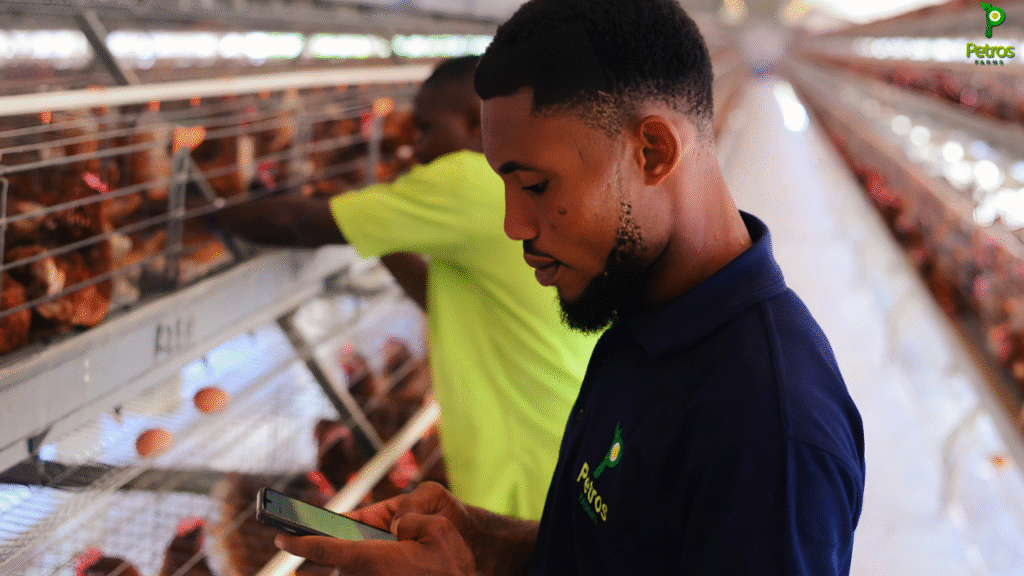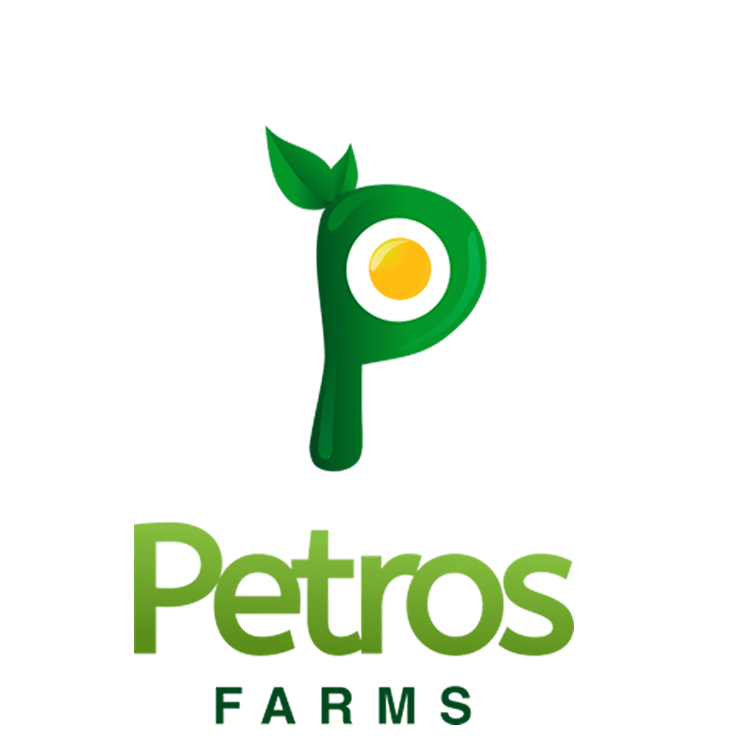04 Mar Ignore Record-Keeping In Commercial Egg Production To Your Peril
Last Updated: May 29, 2025
Let’s Work Together to Build A Successful Poultry Business Of your Dreams
Petros Farms offers 20 minutes free consultation services.
Poultry farming is a lucrative business, but it demands diligent effort, unwavering dedication, and, most importantly, accurate record-keeping. For any successful poultry farmer, meticulously maintaining records of all activities involved in commercial egg production is not just good practice—it’s essential. Record-keeping plays a pivotal role in the efficient and profitable management of a poultry farm, directly impacting your poultry farm profitability and egg production efficiency.
In this updated blog post, we’ll delve into the critical importance of record-keeping in commercial egg production and outline the key information that should be consistently included in your records to ensure your farm thrives in 2025 and beyond.
1. Source of Birds: Tracking Your Flock's Foundation
The origin of your Point of Lay (POL) pullets or Point of Cage (POC) hens is a foundational piece of information. It’s crucial to track the supplier of your chickens to monitor their health, implement effective poultry biosecurity measures, and prevent potential disease outbreaks. This data is also invaluable for tracking genetic characteristics for future poultry breeding programs and making informed decisions about supplier relationships. Knowing your poultry genetics allows you to optimize for high-laying hens.
2. Age of the Hens: Optimizing Egg Production Cycles
The age of your poultry flock is a direct indicator of their egg laying performance. The egg production rate of a specific breed is intrinsically linked to their age. Keeping precise records of hen age helps in accurately estimating potential egg production, planning for timely flock replacements, and managing your poultry production cycles for maximum yield.
3. Egg Production Rate: Benchmarking for Success
Egg production yield is the primary objective of a commercial egg production farm. It is paramount to consistently track the daily egg count and overall egg production rate to monitor the performance of your chickens and implement necessary adjustments in management practices. This information helps in identifying the most productive hens and ensuring you’re meeting or exceeding industry egg production standards. At Petros Farms, we rely on ISA Brown Hens, renowned for their exceptional layer hen performance. The ISA Brown Hen can lay up to 500 eggs from 18 to 100 weeks. Without robust production records, it’s impossible to benchmark your farm’s performance against these recognized standards.
The ISA Brown Hen is renowned for its outstanding performance as the best brown laying hen in the world, with the ability to lay up to 500 eggs from 18 weeks to 100 weeks. Without keeping records of your production, it is difficult to compare the performance in your farm to the standard.
4. Total Feed Intake: Fueling Profitability with Feed Management
Recording the total feed consumption of your chickens is vital for monitoring their overall health, growth, and egg production. This data is also crucial for assessing the efficiency and cost-effectiveness of your poultry feed program. Accurate records help in determining the precise feed requirements of your birds, optimizing poultry feed conversion ratios (FCR), and preventing nutritional deficiencies. A strong FCR directly impacts your farm’s profitability, making poultry feed management a key area for improvement.

5. Total Water Intake: A Critical Indicator of Flock Health
Water is absolutely essential for the health and growth of your hens. Keeping track of daily poultry water consumption helps in monitoring the hydration needs of your flock. Utilizing a reliable water meter for daily monitoring is crucial, as any significant variation in water intake can signal underlying health issues or environmental stressors. The typical water:feed ratio ranges from 1.5:1 to 2:1, though hot weather, especially in tropical regions, can elevate this ratio to as high as 5:1. For instance, a hen consuming 100 grams of feed daily will drink 150 to 200 mL of water, translating to 150 – 200 liters per 1000 hens per day. This is a vital metric for poultry health monitoring.
6. Poultry Shed Temperature and Humidity: Creating Optimal Environments
Poultry house climate control is critical for bird welfare and productivity. The temperature and humidity within your poultry shed significantly impact the health and comfort of your birds. Maintaining optimal conditions through consistent monitoring and record-keeping is vital for preventing heat stress and other health issues. This is especially important in naturally ventilated poultry houses and battery cage systems due to higher stocking densities. At Petros Farms, our high-rise, caged layer facility employs temperature sensors within the battery cages to monitor conditions closely. Heat stress in layers typically begins above 26°C and becomes acutely apparent above 29°C, highlighting the importance of poultry environmental control.
7. Mortality Rate, Vaccination, and Medication Records
Maintaining comprehensive poultry health records is non-negotiable. This includes diligently tracking vaccination schedules to ensure timely disease prevention and accurate medication records for effective treatment. Recording the poultry mortality rate is equally important to identify the causes of death, implement immediate corrective measures such as enhanced biosecurity protocols, adjustments to feeding regimes, and targeted disease control strategies. Regular monitoring of mortality rates empowers you to make informed decisions about your overall poultry farm management.

The Future of Record-Keeping: Leveraging Technology in 2025
In 2025, poultry farm management software and precision poultry farming are no longer just buzzwords; they are becoming essential tools for optimizing operations. Consider integrating technology to streamline your record-keeping processes.
At Petros Farms, we’re proud to be among the first to pilot Aviarai—a groundbreaking digital poultry management platform developed by an African poultry farmer, for African poultry farmers. For too long, Africa has lacked a system built on its own data—Aviarai is changing that.
The platform is designed to simplify record-keeping and deliver actionable insights tailored to the unique conditions of African egg producers. Tools like this represent the future of poultry farming in Nigeria and across the continent. Aviarai is currently in closed beta testing, with public availability expected as early as 2026.
- Digital Record Systems: Move beyond paper logs to digital platforms for easier data entry, analysis, and retrieval.
- Automated Sensors: Utilize IoT (Internet of Things) sensors for real-time monitoring of environmental conditions (temperature, humidity), water consumption, and even feed levels, reducing manual effort and improving accuracy.
- Data Analytics for Decision Making: Leverage the collected data to generate insights into trends, predict potential issues, and make proactive decisions about feeding, health management, and flock rotations. This is where poultry data analysis truly shines.
- Cloud-Based Solutions: Store your records in the cloud for secure access from anywhere, anytime, ensuring data integrity and business continuity.
Key Records Every Poultry Farmer Must Keep
To build a truly data-driven farm, these records are non-negotiable:
- Bird Source: Supplier, breed, genetics
- Flock Age: In weeks
- Egg Production Rate: Daily/weekly output per flock
- Feed Intake: Quantity per day or per 1,000 birds
- Water Intake: Daily usage; monitor spikes or drops
- Temperature & Humidity: Daily shed conditions
- Health Logs: Mortality, vaccination, and medication records
Conclusion: Empowering Your Poultry Farm Through Data
Robust record-keeping in commercial egg production is not merely an administrative task; it’s the cornerstone of a successful and profitable poultry farming business. Accurate and timely records empower you to monitor bird performance, identify areas for improvement, and ultimately ensure the sustained profitability of your poultry farm. By diligently tracking the key information discussed in this blog, and by embracing modern record-keeping technologies, poultry farmers can make informed decisions and implement effective corrective measures to optimize egg production rates and enhance overall farm efficiency.
Top 5 Key Takeaways for Modern Poultry Farmers:
- Poultry farming absolutely requires detailed record-keeping.
- Invest in a reliable record-keeping system, preferably a digital one.
- Cultivate the habit of daily, consistent record-keeping.
- You cannot improve what you have not measured – data drives progress.
- Utilize your records actively for strategic decision-making and continuous improvement.
Start maximizing your profits from egg production in Nigeria today. Petros Farms offers a 20-minute free consultation service to help you develop the right strategy. With the right data-driven approach, your egg farming business can achieve unprecedented profitability.
Cheers,
Petros Farms
Share with:
